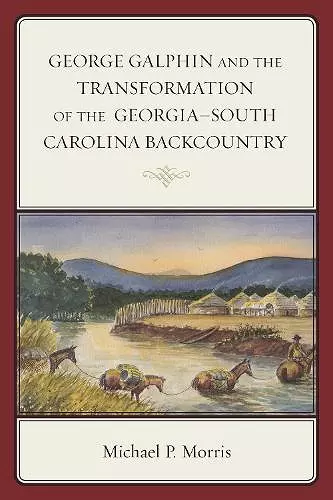George Galphin and the Transformation of the Georgia–South Carolina Backcountry
Format:Hardback
Publisher:Lexington Books
Published:5th Dec '14
Currently unavailable, and unfortunately no date known when it will be back
This hardback is available in another edition too:
- Paperback£50.00(9781498501750)

The focus of this work is a reconstruction of the life and career of an Ulster-Scot fur trader, George Galphin (pronounced Golfin), who immigrated to South Carolina in the colonial period. The thesis of this work is that his life and career helped to shape the history of the backcountry of Georgia and South Carolina in three distinct ways. First, his support of a “for profit” Indian trade (as opposed to a “for stability trade”) shaped Anglo-Indian relations between frontier settlers and their Indian neighbors. Ultimately, men like Galphin helped the United States move away from the British policy towards Native Americans in favor of a uniquely American policy which ran the gamut from exploitation to land seizures and finally toward Indian Removal itself. The book involves a look at the histories of the Muskogee Creeks and Cherokees who were his clients and has a heavy Native American component. Galphin’s second major influence on the Southeast came with the creation of the Ulster-Scot communities he sponsored in both South Carolina and Georgia. The relocation plans catered strictly to the Scots-Irish Protestants and located them in “danger zones” between coastal settlements of Anglo-Saxon British settlers and the Indian frontiers of the two colonies. Galphin’s third major influence came during the American Revolution when he was appointed as a Patriot Indian Commissioner fighting to control the southeastern tribes and keep them out of the war. In that role, he made his contribution, as did so many others, that helped secure a Patriot victory. This part of his story would be of note to an audience interested in the American Revolution in the South from the perspective of the backcountry. Finally, his family life included the creation of a large, multi-racial family which helped establish the Creole society of the Eastern Georgia/Western South Carolina. His spouses and children included Caucasians, Native Americans, and African-Americans. Two of Galphin's daughters were his slaves until his death.
This book is an engaging, well written, and richly documented examination of the life of Ulster-Scot fur trader George Galphin and the complex role that he, and those like him, played on the frontiers of Colonial South Carolina and Georgia and in the coming and course of the American Revolution. After arriving in South Carolina in 1737, Galphin learned the fur-trading business and became a trusted intermediary for both Colonial governors and Native peoples as a result of his immersion in the Creole culture of the Colonial Southeast. He was a strong supporter of the free-trade model for the fur trade and also aided other Scots-Irish immigrants in settling on the South Carolina and Georgia frontiers. With the coming of the Revolution, Galphin became an agent for the patriot cause and worked to balance it with his identification with the Creek Indians, with whom he had long been affiliated. Morris does an excellent job of placing his subject in the larger historiographical context. All students of American Colonial history, particularly its economic, political, and social dimensions, will find this book of value. Summing Up: Highly recommended. All levels/libraries. * CHOICE *
Morris’s recounting of Galphin’s place among the important constituency of colonial Indian traders is a solid contribution to the still ambiguous dynamics of the imperial crisis and the Revolution in the South. * Journal of Southern History *
George Galphin and the Transformation of the Georgia–South Carolina Backcountry is a well-researched and fascinating look at the intricacies of eighteenth-century Southern backcountry dealings. This is a wonderful read that enlightens and informs. -- Norman Presse, Dalton State College
Through his thoroughly researched study of fur trader George Galphin, Michael Morris not only introduces the reader to an important but little known actor in the colonial and revolutionary southern backcountry, but also shines new light on the complicated interaction of gender and race/ethnicity within the context of Native and colonial politics and economic relations during the era. Professors, students, and lay people alike will find this book an accessible and highly enjoyable piece of scholarship. -- Jennifer Gross, Jacksonville State University
ISBN: 9781498501736
Dimensions: 237mm x 159mm x 21mm
Weight: 440g
202 pages